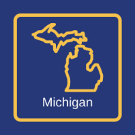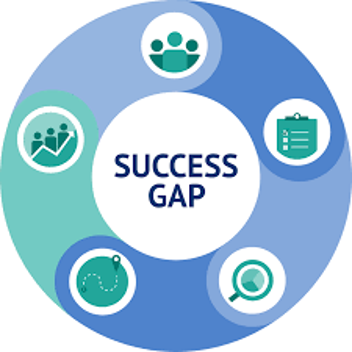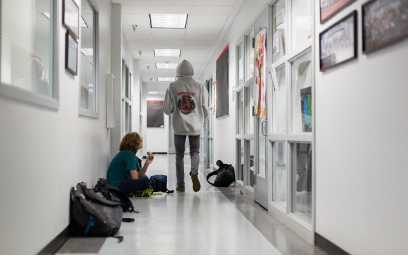SIGnetwork: October 2021

News You Can Use

Our SPDG National Meeting, “Telling Our Stories”, was a terrific success due to: (a) our speakers, Stephanie Autumn and Janice Creneti, (b) our organizers, Kelsey Leib and John Lind, and (c) YOU! Between planning the conference (thank you planning committee), facilitating sessions, presenting, and engaging with other participants and the content, you made this a successful and valuable event. Thank you all. Head to our Depot page to watch recordings and access resources.
Our SIGNetwork Leadership Award recipient, Steve Goodman, along with his Michigan SPDG team will be sharing their lessons learned implementing MTSS over the years at our next Directors’ Webinar (Thursday, Nov 4th from 3-4:30 ET).
Questions about the webinar? Contact Jennifer Coffey or Kelsey Leib (Jennifer.coffey@ed.gov or signetwork@uoregon.edu).
Research Roundup

From the Hechinger Report: PROOF POINTS: Putting praise to the test
A program that monitors teachers’ “praise rates” led to improved student behavior and achievement in a well-designed evaluation
by JILL BARSHAY, August 23, 2021
An Excerpt:
“One widely used program called CHAMPS was recently tested in a study involving more than 100 teachers and almost 1,500 middle-school students in a randomized controlled trial — the kind of gold-standard experiment that is common in medicine but not in education. The experiment took place in two St. Louis school districts with a majority of Black and low-income students.
Teachers were coached to say three to five statements of praise for every reprimand and encouraged to raise their “praise rates,” which were monitored. Suddenly, lots of normal behavior became worthy of praise, even “Thank you for raising your hand” and “Thank you for sitting quietly.”
Outside observers, who weren’t told which teachers got the training, noted that students were spending more time on task. More importantly, the program appeared to make an academic difference. Math and reading scores on one standardized test were slightly higher in the classrooms of teachers who got the training compared with classrooms that didn’t.”
Supports Associated with Teacher Retention in Michigan

From REL Midwest
From REL Midwest
Statewide teacher shortages are hindering Michigan's efforts to ensure that all students have equitable access to qualified teachers. Implementing teacher supports—which may be policies, practices, or programs—to increase teacher retention offers a way to alleviate shortages. This study identified supports implemented by local education agencies (traditional school districts and charter schools) that are associated with teacher retention. The study examined local teacher retention rates from 2013/14 to 2018/19 and teachers' responses to a survey about teacher supports in their local agencies and their perceptions of those supports.
Average annual teacher retention rates among Michigan's local education agencies ranged from 33 percent to 100 percent in the six-year period. The likelihood that teachers would remain teaching in their local education agency was higher in local education agencies that served lower percentages of students who were economically disadvantaged, higher percentages of students who were White, and higher percentages of students proficient in English language arts. And the likelihood was higher in agencies that had regular supportive communication between new teachers and school leaders, implemented mentoring programs, provided new teachers with an orientation to their school, allowed teachers to set goals in their evaluations, and provided teachers with sufficient instructional resources. The study also found that supports associated with teacher retention varied by the type of local education agency and the percentage of students who were economically disadvantaged. Findings from this study can help education agencies in Michigan prioritize which of 30 teacher supports examined merit more rigorous investigation.
Making Your Work Easier

The U.S. Department of Education released Supporting Child and Student Social, Emotional, Behavioral and Mental Health to provide information and resources to enhance the promotion of mental health and the social and emotional well-being among children and students. This resource highlights seven key challenges to providing school- or program-based mental health support across early childhood, K–12 schools, and higher education settings, and presents seven corresponding recommendations. It also provides many real-world examples of how the recommendations are being put into action by schools, communities, and states across the country.
The U.S. Department of Education’s Office of Special Education and Rehabilitative Services (OSERS) released a Q&A entitled the Return to School Roadmap: Development and Implementation of Individualized Education Programs in the Least Restrictive Environment under the Individuals with Disabilities Education Act.
Topics covered under this latest Q&A, focusing on Individualized Education Programs (IEP), include:
- Ensuring IEPs Are in Effect at the Start of the School Year
- Convening the IEP Team
- Consideration of Special Factors:
Considering the Assistive Technology Needs of a Child
with a Disability
Addressing the Social, Emotional, Behavioral, and Mental ---Health Needs of Children with Disabilities
Addressing the School-Related Health Needs of Children with Disabilities with Underlying Medical Conditions - Determining Appropriate Measurable Annual Goals & Considering the Child’s Need for Compensatory Services
Making Extended School Year (ESY) Services Determinations - Considering Secondary Transition Services
- Making Educational Placement Decisions
- Resolving Disagreements Regarding a Child’s Educational Program
Coaching Partnership Agreements, Part 1: Principal and Coach

By Lindsay Deacon
Partnership agreements are incredibly helpful for coaches and their peers to outline core responsibilities and create transparency around their coaching role. Lindsay Deacon, a school improvement coach in Portland, Oregon, walks through the steps for first creating a partnership agreement with your principal in part one of her series.
Spotlight on OSEP/TA

The IDEA Data Center (IDC): Success Gaps Toolkit

The Success Gaps Toolkit: Addressing Equity, Inclusion, and Opportunity includes materials and resources for facilitating a team to address success gaps in a district or school by identifying root causes and developing an improvement plan for reducing success gaps. Learn more
AEM Center: Designing for Accessibility with POUR (cast.org)
Want to ensure the materials you create are accessible to all your learners? The POUR principles are a great place to start. These principles define four qualities of an accessible experience and they are at the foundation of the Web Content Accessibility Guidelines (WCAG) an international standard for making web content accessible.
National Center on Accessible Educational Materials (AEM Center) provides technical assistance and also has helpful resources to increase availability and use of accessible education materials and technologies. See CREATE tab to access
The POUR Principles define four qualities of an accessible experience and are at the foundation of the Web Content Accessibility Guidelines (WCAG) an international standard for making web content accessible. That is, P – Perceivable; O – Operatable; U – Understandable; R – Robust
WAVE web accessibility evaluation tool
Data Informed

What Works Clearinghouse Study Reviews: The Impacts of Instructional Practices in Middle School Math
This week, the What Works Clearinghouse highlights three new study reviews of instructional practices for teaching middle school math, adding to the evidence from more than 11,000 citations about what works in education. Study One: Jitendra et al. (2019) is a study of schema-based instruction, a set of lessons designed to help students solve problems by asking them to identify the structure of the problem, represent information in the problem visually, estimate the answer to the problem, plan how to solve it, solve the problem, and determine if their answer makes sense. Study Two: Rohrer et al. (2015) is a study of interleaved practice, that includes concepts from current and past lessons and requires multiple strategies learned at different points in the curriculum. Finally, Study Three: Hallinen & Booth (2018) is a study on worked examples, correctly or incorrectly solved math problems that show students how someone else solved the problems.
If You Have the Time

What Can the Scramble to Get Classrooms Online During COVID Teach Us About Better Professional Learning?
This post, produced by the Hybrid and Distance Learning Collaborative (HDLC), first appeared on the Center for the Future of Teaching & Learning at WestEd blog. The HDLC is a COVID Education Equity Response Collaborative initiative.
Excerpt: Starting Slow, Small, and Collaborative
For example, a major learning from the Math in Common network was that professional learning was “more likely to generate classroom change than one-time, centralized, and decontextualized trainings” when it:
- Occurred at a teacher’s school during or after the school day
- Focused on lessons and the details of daily practice
- Included coaching as well as ongoing collaboration with peers
- Was supported by coaches positioned as “messengers and mediators” connecting school sites to the goals of the district office
Another major learning from the Math in Common network was the importance of starting professional learning “slow and small.” This often was accomplished through cohort structures, where new math professional learning was offered to small “opt-in” groups before being rolled out to larger groups. The key features of these structures were:
- “Begin with the willing” — early cohorts were composed of motivated volunteers
- Iterate each successive cohort based on early learning and feedback
- Build buy-in and word-of-mouth to make later cohorts more appealing
Correctional Education News
Study: Formerly Incarcerated Students Who Write Letters To Teachers Were Less Likely To Return To Jail.

EdSource (10/19) reports that “describing their goals and hopes helped students feel more connected to school, a study found.” Formerly incarcerated students “who wrote letters to their teachers – describing their hopes and dreams, asking for a second chance – were less than half as likely as their peers to return to jail, a Stanford University study found.” Researchers “spent two years working with about 50 students in Oakland Unified who had spent time in the county’s juvenile justice system and had recently returned to their regular schools.” Researchers “asked the students to write personal letters to their teachers.” Half the letters “were delivered to the teachers, and half were not.” The recidivism rate “among students whose letters were delivered was 29%.” For students “whose teachers did not see the letters, 69% ended up back in jail.”

